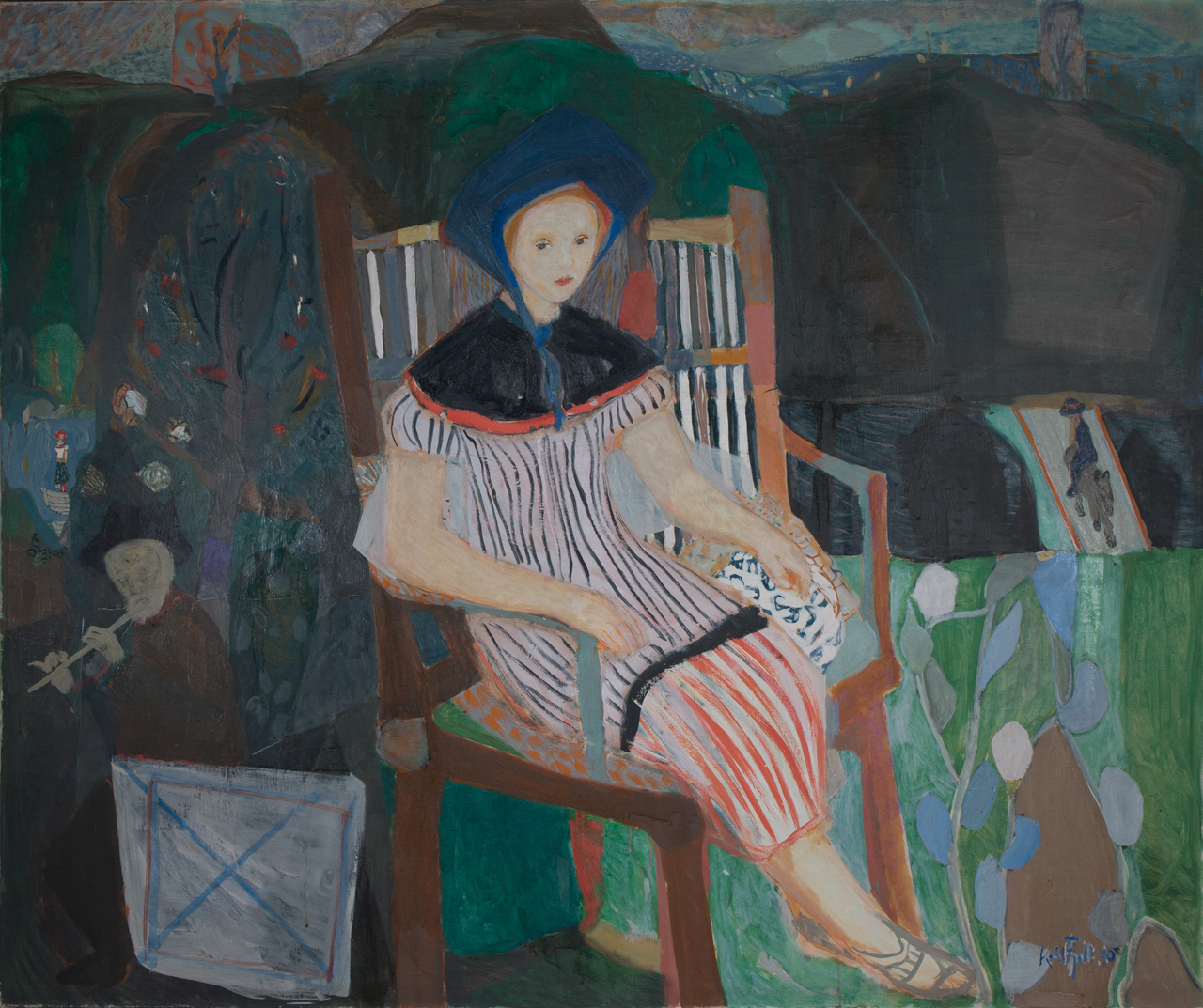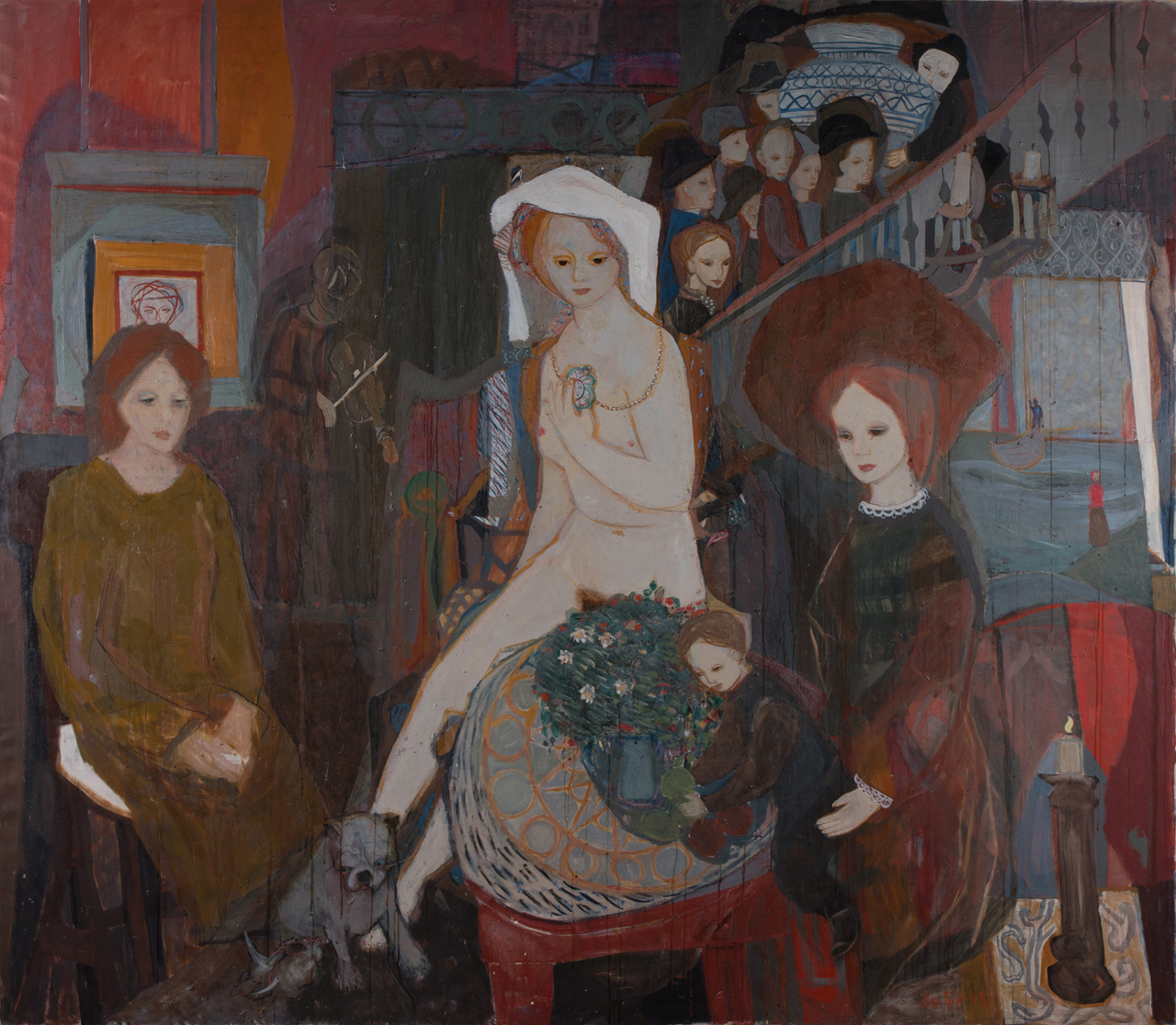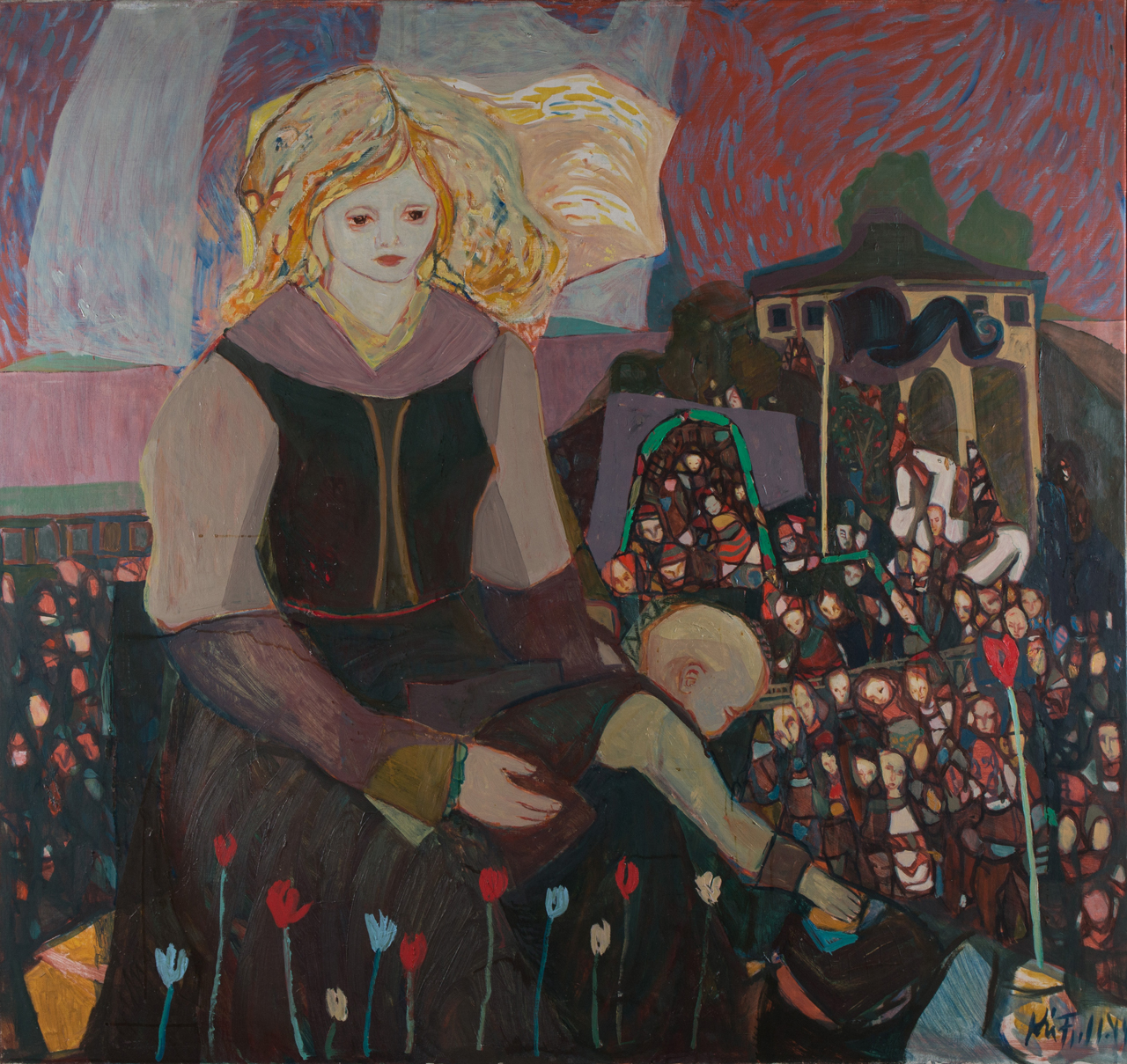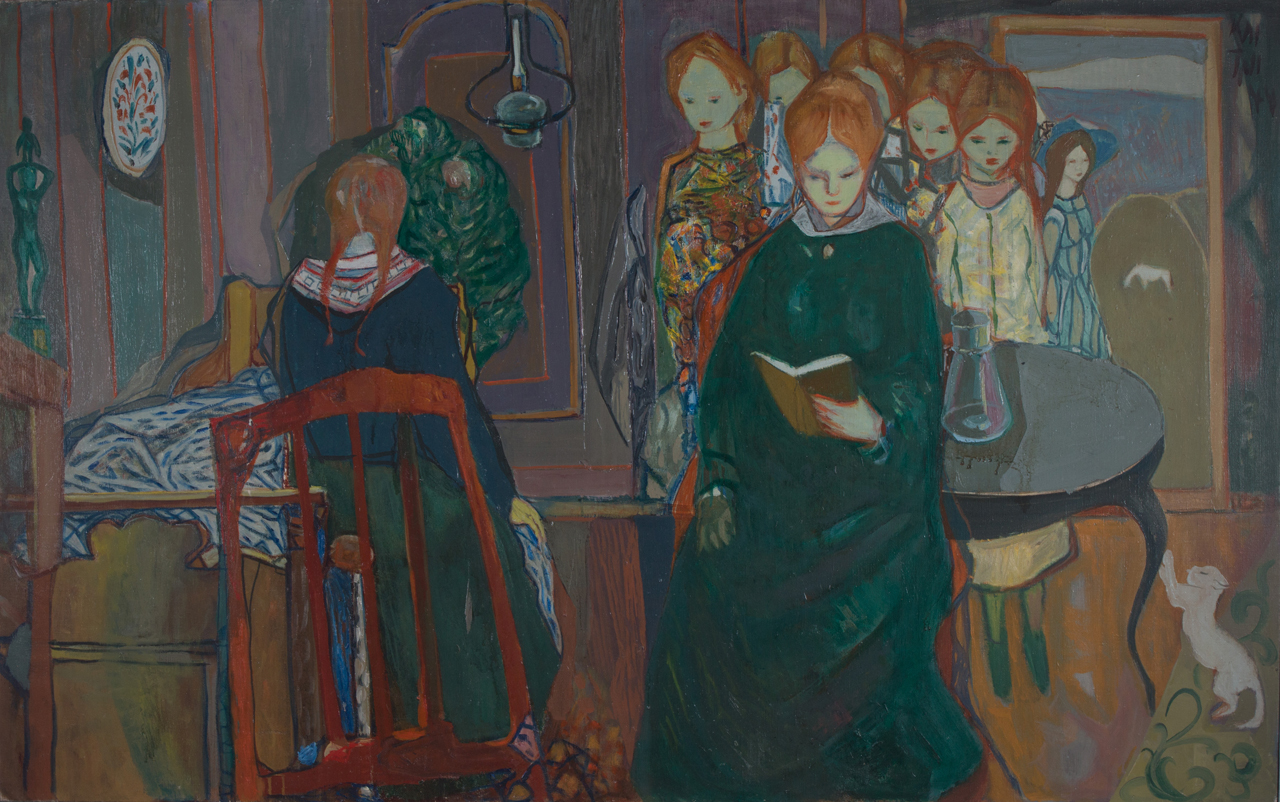Kai Fjell (1907 - 1989)
Kai Fjell depicts ‘the mystery of life, love and death’. He is far more poetic and less political than several other artists represented in the Hafsten Collection. The many symbolic elements enable us to sense an influence from Surrealism, yet Norwegian folk art also played an important role for him. Like several other artists whose works are in the Hafsten Collection, Fjell was strongly influenced by an exhibition of German Expressionist art at Kunstnernes Hus in Oslo in 1932. Some years later, in 1937, he made his breakthrough with what has been described as a ‘sensational’ solo exhibition at Kunstnernes Hus. From then on, he was considered one of the most talented Norwegian painters.
“Bjarne Engebret and I traveled in 1944 to Kai Fjell in Hernes by Elverum where he lived with his family and his extremely dutiful parents. We arrived there just before Easter and were very well received in the well maintained and stylish forest farm with the many houses. I had long conversations with his mother and father - memories that I want to keep in my mind as real and good. I bought "Mother and Child" and "The Sickroom" there. The latter I was not supposed to have, as Fjell had intended it for a fish supplier up north, but he himself found that it suited me best. […] He thereby manifested a relationship between the two of us which can be described as outstandingly good." (Halvdan Hafsten)

The Flute, 1940. Purchased from the artist
‘Explanation
I can’t explain my painting better than they can explain themselves.
I don’t know why I painted them and I don’t know how, and I don’t want to know.
I don’t remember when they were painted and don’t know what; furthermore, I don’t know where they have ended up.
My pictures are a mystery to me, as is all other art. What can be explained about the pictures is irrelevant to the pictures, so to speak.
I can’t understand anything other than that the easier it is to explain a picture, the worse the picture is, and the fewer of them that can be explained, the better.
In sum: I explain none of them.’
(Written by the artist at Hafsten’s request)

The Widow, 1942. Purchased from the artist.
‘Friday, 6 May, the undersigned gave a lecture on Kai Fjell […]. The following pictures by these artists were discussed: The Widow
The woman also fills this large picture, where in all stages of life, she pays homage to the dead husband. There is a sorrow that cannot let the deceased sink into the grave and the earth, but lifts his blue urn to the heavens. The picture is ornamental in its colours, filled with a multitude of details, as is often the case in the artist’s large compositions from this period. The musician, the dog, the flower vase – many stories are told simultaneously, but they all play a part in the work as a whole.’
Letter from the conservator Karin Hellandsjø, Sonja Henie and Nils Onstad’s Foundation, Art Centre, Høvikodden. (From Halvdan Hafsten’s Archive)

Mother and child, 1944. Purchased from the artist.
‘Fjell’s pictures are poems about life and death, the interaction between humans and nature. The picture “Mother and Child” is a beautiful homage to the young mother – she has a whole sunrise of colours in her hair and scarf. The child is the miracle, and around it [the artist has] spun a strange ornamental dream that hints at the centuries of time – whereby the graveyard is transformed into lush vegetation. Fjell does not paint plastic [three-dimensional] figures – but like a rose painter, he decorates the pictorial plane. The pure and simple flat surface stands in contrast to the paintbrush’s baroque spring dance. – “Mother and Child” is a picture in which traditional Norwegian art and European modernism have melted together into an absolutely richly harmonising whole.’
Tour guide Fritz Røed (Traveling exhibition no. 9, Finmark, Vestfold and Akershus counties 1956/57). (From Halvdan Hafsten’s Archive)

The Sickroom, 1944. Purchased from the artist
‘Sickrooms and deathbeds are of course themed in Norwegian art by [Edvard] Munch. But Fjell isn’t just a companion to the grand old man. His forms are different, more lyrical, his colour system, in which grey is dominant, has a fine unity – except for where there is a richer, almost folkloristic explosion of colours – and his vague way of creating a composition, with sudden appearances of almost nonfigurative segments, shows his knowledge of the advent of Cubism.’
The Jerusalem Post, 14 August 1959. Romanticism and Ghosts from Norway. E. Yapou-Hoffman (in translation). (From Halvdan Hafsten’s Archive)
Article and archive selection
Hanne Beate Ueland, Director Stavanger art museum
Photos
Stavanger art museum